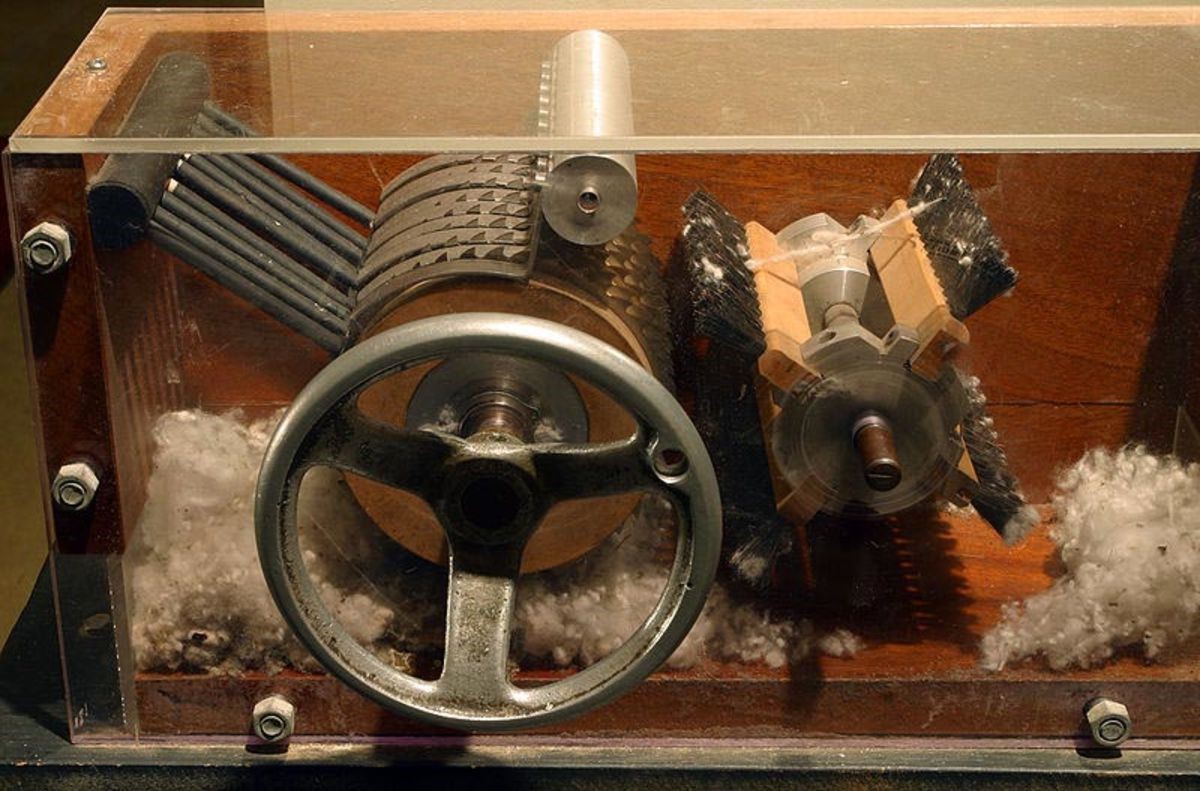
Ever wondered how a simple invention could dramatically change the world? Cotton gins did just that, transforming the cotton industry and shaping the course of history. But what exactly is a cotton gin, and why did it become so pivotal? In essence, this device revolutionized the way cotton was processed, making it quicker and easier to separate cotton fibers from their seeds. This seemingly straightforward mechanism had profound impacts, from boosting cotton production to influencing social and economic structures. Ready to unravel some mind-blowing facts about this game-changing invention? Let's dive into the 25 best facts about cotton gins, shedding light on its significance and the ripple effects it created across the globe.
Key Takeaways:
- The cotton gin, invented by Eli Whitney, revolutionized the cotton industry by making it much easier and faster to separate cotton fibers from their seeds, leading to significant economic and social impacts.
- Despite its controversial history, the cotton gin remains a crucial part of the global cotton industry, with ongoing innovations aimed at making cotton ginning more efficient and environmentally friendly.
What is a Cotton Gin?
A cotton gin is a machine that quickly and easily separates cotton fibers from their seeds, enabling much greater productivity than manual cotton separation. The fibers are then processed into various cotton goods, while the seeds can be used to grow more cotton or to produce cottonseed oil.
-
Eli Whitney invented the modern cotton gin in 1793. This invention revolutionized the cotton industry by increasing the amount of cotton that could be processed.
-
The term "gin" is short for engine. It refers to the mechanical process of separating cotton fibers from their seeds.
How Does a Cotton Gin Work?
Cotton gins work by pulling cotton through a mesh using hooks or wire teeth that catch the fibers but are too small for the seeds to pass through. The seeds are left behind and the cotton fibers are pulled away, ready for further processing.
-
Before the cotton gin, separating cotton fibers from their seeds was a labor-intensive process that could take an entire day for a single pound of cotton.
-
Modern cotton gins can process thousands of pounds of cotton in a single day, showcasing a significant leap in efficiency and productivity.
Impact of the Cotton Gin on the Economy
The invention of the cotton gin had a profound impact on the American South's economy, leading to cotton becoming the dominant crop and a key export.
-
The cotton gin's efficiency made cotton farming much more profitable and led to the expansion of cotton plantations in the South.
-
Unfortunately, this also led to an increase in the demand for slave labor, as plantation owners sought to maximize their cotton production.
-
By the mid-19th century, cotton accounted for about 60% of all American exports, thanks in large part to the cotton gin.
Innovations and Improvements Over Time
Since its invention, the cotton gin has undergone numerous improvements to increase its efficiency and reduce its labor requirements.
-
The first models of the cotton gin were hand-cranked, but later versions were powered by animals, water, or steam.
-
Modern cotton gins are highly automated and can separate the seeds from the cotton fibers much more quickly and efficiently than the original models.
-
Innovations in cotton gin technology have also focused on reducing the damage to the cotton fibers during the ginning process, ensuring higher quality cotton is produced.
Environmental and Social Impacts
The widespread use of the cotton gin had significant environmental and social impacts, not all of which were positive.
-
The expansion of cotton farming led to significant deforestation and soil depletion in many parts of the American South.
-
The reliance on slave labor for cotton farming and ginning operations is a dark chapter in American history, highlighting the social costs of agricultural advancements.
-
In recent years, there has been a push towards more sustainable cotton farming practices, including the development of cotton gins that are more energy-efficient and less harmful to the environment.
Cotton Gin in Modern Times
Today, the cotton gin remains a crucial part of the cotton industry, though the machines and the context in which they operate have changed significantly.
-
There are now portable cotton gins, allowing for on-site ginning in remote farming areas, reducing transportation costs and increasing efficiency.
-
Genetic modifications to cotton plants have made fibers easier to gin, reducing the strain on machines and improving the quality of the final product.
-
Despite technological advancements, the basic principle of the cotton gin—separating cotton fibers from their seeds—remains unchanged since Eli Whitney's time.
-
The global cotton industry continues to innovate, with ongoing research aimed at making cotton ginning even more efficient and environmentally friendly.
Conclusion
-
The cotton gin is a pivotal invention in the history of agriculture and industry, transforming the cotton industry and having lasting impacts on the economy, society, and environment.
-
Its invention marked the beginning of a new era in textile manufacturing, making cotton the most important fiber in the world.
-
Despite its controversial history, particularly regarding its impact on slavery, the cotton gin's significance in industrial and agricultural history cannot be understated.
-
Ongoing innovations ensure that the cotton gin remains relevant in today's global cotton industry, continuing to influence the way cotton is produced, processed, and consumed around the world.
-
As we move towards more sustainable and ethical manufacturing practices, the cotton gin serves as a reminder of the complex interplay between technology, economy, and society.
-
Understanding the history and development of the cotton gin helps us appreciate the challenges and opportunities that lie ahead in the quest for sustainable and equitable cotton production.
-
The legacy of the cotton gin is a testament to human ingenuity and its capacity to transform industries and societies.
-
As we look to the future, the lessons learned from the cotton gin's history will undoubtedly inform the next generation of agricultural and industrial innovations, ensuring that we continue to improve efficiency while minimizing our environmental footprint and respecting human rights.
A Final Look at the Cotton Gin's Legacy
We've journeyed through the fascinating world of the cotton gin, uncovering its profound impact on history, agriculture, and industry. This invention, simple yet revolutionary, reshaped economies and societies, laying groundwork for the modern world. Eli Whitney's creation not only revolutionized cotton processing but also played a pivotal role in shaping the course of American history, particularly in the context of the Industrial Revolution and the Civil War. Its legacy, complex and multifaceted, continues to be studied and appreciated for its contributions to technological innovation and economic development. Understanding the cotton gin's story helps us appreciate the intricate connections between invention, economy, and society. It's a testament to how a single innovation can alter the fabric of history, weaving new patterns in the tapestry of human progress.
Frequently Asked Questions
Was this page helpful?
Our commitment to delivering trustworthy and engaging content is at the heart of what we do. Each fact on our site is contributed by real users like you, bringing a wealth of diverse insights and information. To ensure the highest standards of accuracy and reliability, our dedicated editors meticulously review each submission. This process guarantees that the facts we share are not only fascinating but also credible. Trust in our commitment to quality and authenticity as you explore and learn with us.


